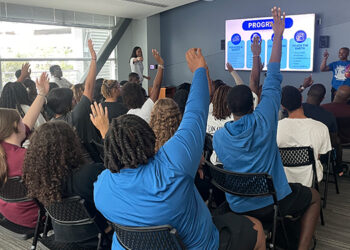A flurry of mass shooting incidents occurring on college campuses has evoked significant consternation among those within the realm of higher education. Notwithstanding resultant paralyzing fear and political dissension, collegiate recreation administrators must establish evidence-led, preventative measures to minimize dangers associated with unforeseen catastrophes, which have tragically trended more commonplace in recent years.
While program participation data varies considerably, it should be noted that recreation facilities are among the most heavily traversed and frequented buildings on college campuses. Recreation facilities situated on large university campuses attract thousands of members of the university community each day and those located in urban environments or in close proximity to large cities draw additional visitors and nearby residents. As such, recreation administrators should recognize potential dangers which increase risk exposure and strive to prevent their transpiration.
The establishment and subsequent enactment of the following strategic measures have been collectively culled from decades of experience in managing facilities, personnel and programs, suggestions obtained from colleagues throughout the years, and evidence-led best in practice solutions present within the existing literature.
1. Assess Safety
The commencement of a risk management plan should begin by administrators asking themselves “are we protecting our patrons to the fullest extent the law allows?”
2. Identify Hazards
In conjunction with their institution’s legal, public safety, and facilities departments and if applicable, local and state agencies, administrators should identify possible hazards within and proximate to their facilities.
3. Institute a Comprehensive Action Plan
Once all potential risks are accounted for, leadership should draft and enact measures to ascertain the safety of their patrons and employees. Suggested measures apposite to ameliorating risk associated with criminal activity and acts of terror, could include:
- Monitoring access points and if necessary, restricting access to certain constituencies and during certain hours.
- Requesting additional security patrols and encouraging public safety personnel to use the facility when not on duty. The presence of more frequent patrols will likely deter individuals from engaging in criminal activity. Further, having another set or two of qualified eyes within the facility will prove beneficial in detecting suspicious behavior.
- Requiring facility staffers wear departmental issued attire. Doing so will enhance visibility and help delineate them from patrons.
- Ensure that all employees receive proper and thorough training, especially as it relates to emergency situations. Employees should be mandated to participate in active shooter role-playing drills. In order to prevent rousing panic among patrons, these drills should be conducted when the building is closed and preferably with the involvement of public safety and law enforcement personnel.
- Establish evacuation or lock-down procedures. To facilitate efficient and safe evacuations, egress points should always remain unobstructed and the arrangement of equipment and furniture in the facility should be able to accommodate a high and potentially rapid volume of foot traffic. If lock-down is warranted, please ensure that locations serving as shelter-in-places are replete with thick walls, lockable doors, no or few windows, and access to communication devices or networks.
About the Authors
Christopher Policastro is the Director of Recreation, Fitness, and Wellness at Manhattan College in Riverdale, NY.
Joseph Giandonato is the Manager of Health Promotion at Drexel University in Philadelphia, PA.










